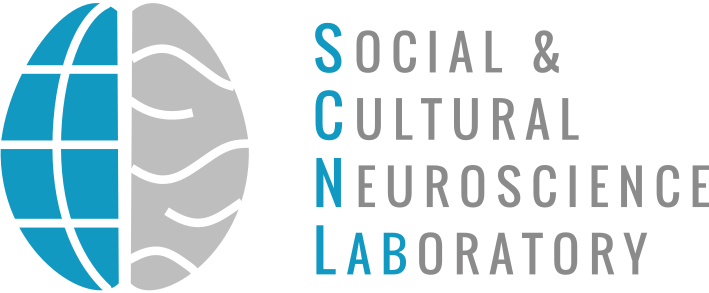Culture and Health
Dr. Losin describes the science behind the pain of childbirth.
A growing body of research suggests that there are a number of different ways in which our beliefs, practices and environment can influence health and health care. Culture can shape conceptions of illness and treatment, the attitudes and behavior of health care providers and patients, and cultural environments can impact health directly. Yet the brain mechanisms underlying these culture-health relationships remain largely unstudied.
A Sociocultural Neuroscience Approach to Pain
Although pain is a universal phenomenon, the experience of pain isn’t the same for everyone. For example, a common approach to measuring pain in the clinic is a single number reported by the patient on a 1-10 numerical rating scale. Behind this single rating, however, exists a complex array of biological, psychological, and sociocultural contributing factors. Yet the mechanisms underlying these effects on pain perception remain poorly understood. To address this, our current research takes a sociocultural neuroscience approach to pain in order to uncover the sociocultural and neurobiological mechanisms driving differences in pain report. As part of this approach, we conceptualize the various factors affecting subsequent pain report as cumulative across the lifespan, with underlying neurobiological mechanisms at each stage.
neurocultural model of pain
Current Research
We are currently utilizing simulated doctor-patient interactions in our laboratory to test how pain perception may be altered depending on the sociocultural and contextual factors at play. These include characteristics important in building a positive doctor-patient relationship, such as empathy, trust, and perceived similarity. Our simulated clinical interaction studies take place in our experimental room, designed to resemble a doctor’s office, and involve the participation of medical trainees at the University of Miami and surrounding medical schools.
Behavioral Experiment Room
In our simulated clinical interactions, participants are video and audio recorded to measure subtle changes in facial expressions and nonverbal behaviors, such as smiling, touching, and eye contact. In addition, both participants in the dyadic interaction are connected to biophysiologic data collection devices that measure heart rate, skin conductance, and blood oxygen level, among others. Pain is induced using a thermal heat probe that is placed against the forearm. For each heat stimulation, patients rate their pain using several different rating scales. As part of this research program we plan to use functional magnetic resonance imaging (fMRI) to investigate the neurobiological mechanisms underlying these doctor-patient effects.
Cultural Learning
Humans acquire cultural beliefs and practices from others through a combination of instructed learning and imitation. Anthropological theories of cultural learning suggest that a set of psychological biases exist that increase the efficiency of cultural learning. These biases include preferential learning of certain types of information and from certain individuals, especially those who are perceived to be similar to the self or high in social status.
losin et al. (2009) progress in Brain Research
We have investigated brain mechanisms underlying imitative learning biases related to an imitative model’s perceived self-similarity and social status as conveyed by the imitative model’s gender (Losin, Iacoboni, Martin, & Dapretto, 2012), race (Losin, Iacoboni, Martin, & Dapretto, 2014), and political ideology (Losin et al., 2015). Building upon this work, we have proposed a neural model of cultural learning by imitation that includes brain regions implicated in action observation and imitation, mentalizing and reinforcement learning (Losin et al., 2015).
losin et al. (2012) Social cognitive & Affective Neuroscience
In order to disentangle the sociocultural and physical aspects of gender, we looked at participants’ feelings of similarity toward different models to see if those feelings diverged from their physical gender similarity (Losin, Iacoboni, Martin, & Dapretto, 2012). We found that both male and female participants reported feeling more similar to models of their own gender. We also examined which neural systems, if any, responded differently to imitating own- versus other-gender models to get an idea of what might be driving the own gender imitative bias. Strikingly, the only difference we found was that activity in the reward network was greater while imitating own-gender models, compared to other-gender models.
Losin et al. (2015) culture and brain
In a separate imitation study, we examined the influence of ideology information on the neural representation of the imitated model’s race (Losin et al., 2015). We sought to understand if the models’ physical traits, such as race, were the main drivers of imitative biases, or if imitative biases were driven by sociocultural associations with race. What we found was that racial differences in visual regions remained largely the same, driven by physical characteristics, while racial differences in the imitation system disappeared in the study with ideology, suggesting that abstract sociocultural knowledge can reduce the influence of groups associated with physical traits.
Cultural Plasticity
Dr. Losin explains the phenomenon of neuroplasticity.
Cultural beliefs and practices profoundly shape behavior and cognition. As a consequence, cross-cultural differences have been demonstrated in cognition, perception and behavior. Neuroscientists have demonstrated that different types of experience ranging from sensory deprivation in early life to playing a musical instrument can result in measurable structural and functional changes in the brain. Therefore, differential cultural experience must also result in structural and functional changes in the brain.
In contrast, most of our understanding of psychology and brain function has come from research on small samples of individuals from Western industrialized nations. Thus, understanding brain mechanisms of cultural differences in behavior and cognition will help to provide a more complete and accurate picture of psychology in brain function. We have previously investigated how an individual’s gender and ethnicity influence brain mechanisms underlying imitative learning (Losin, Cross, Iacoboni, & Dapretto, 2014), and we are currently investigating the sociocultural and neural mechanisms underlying previously documented ethnic differences in pain report.









